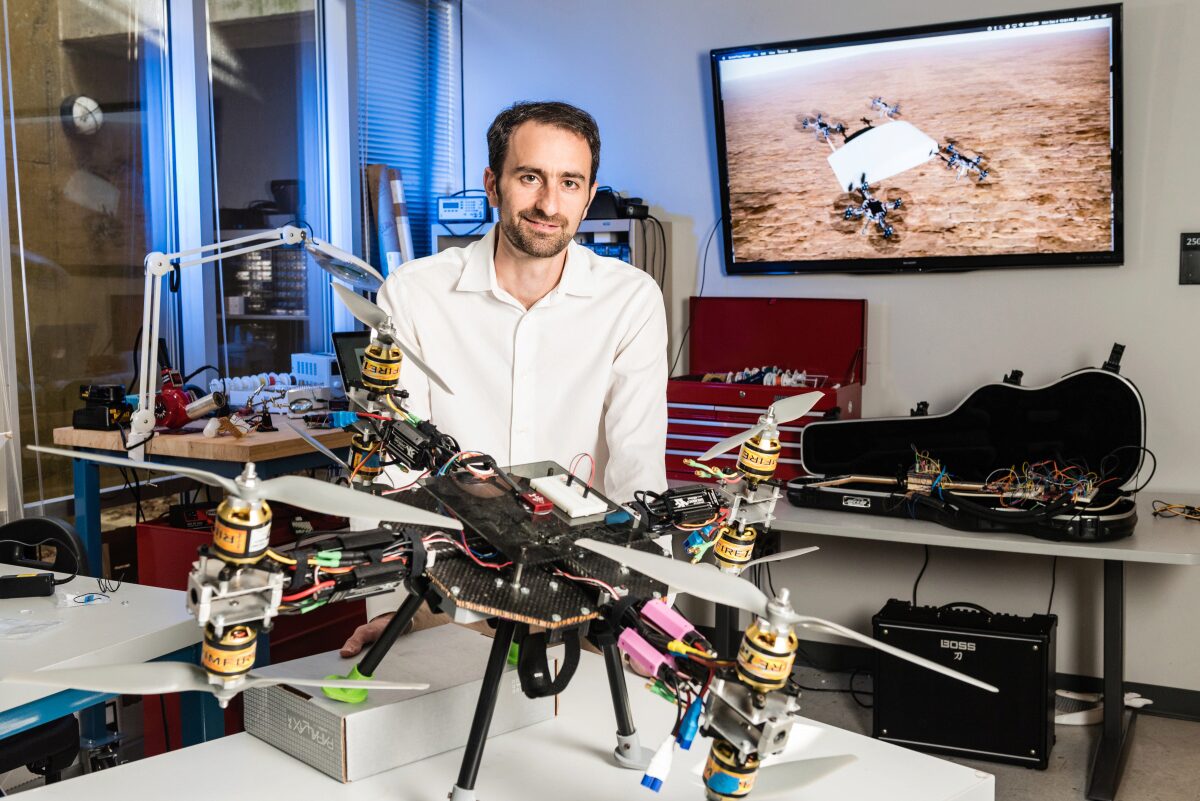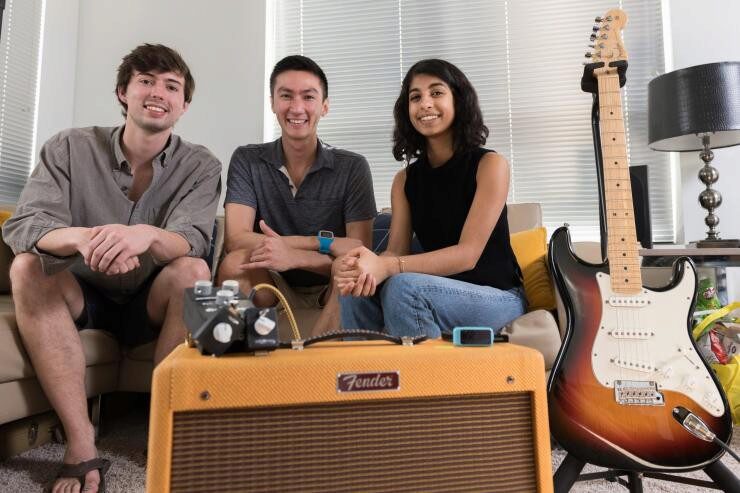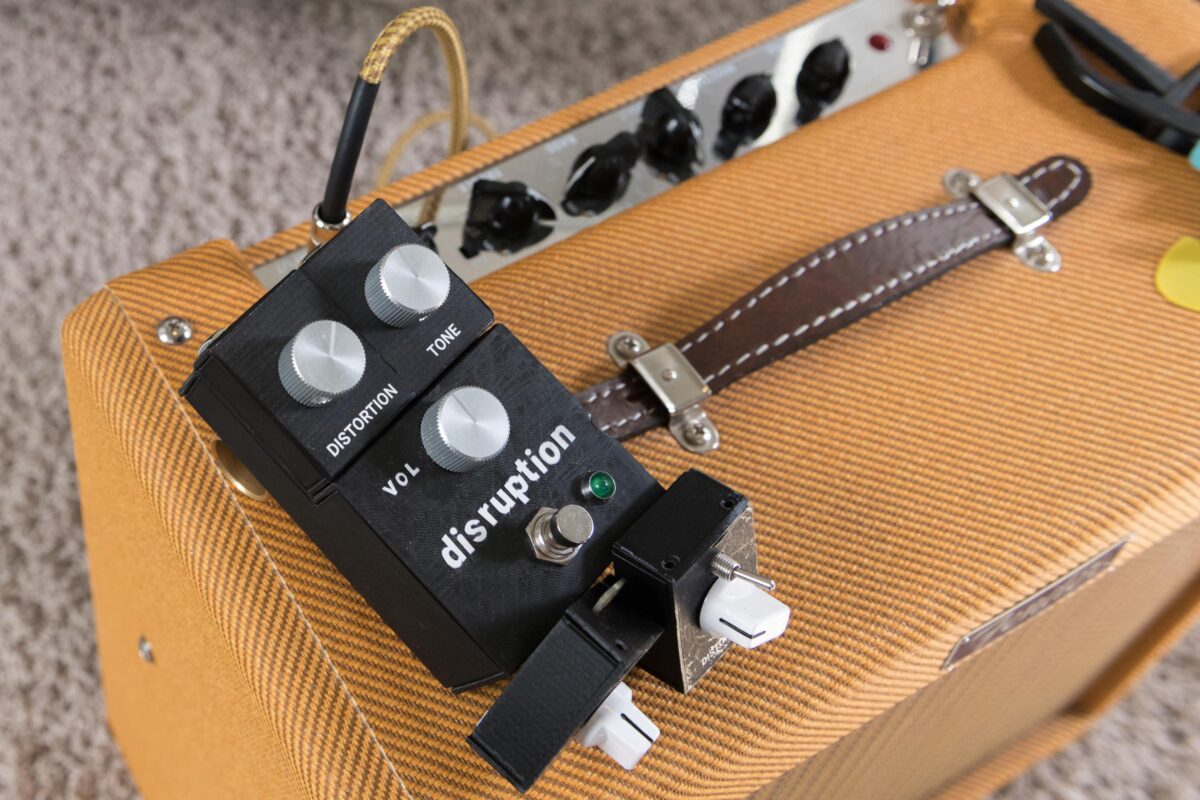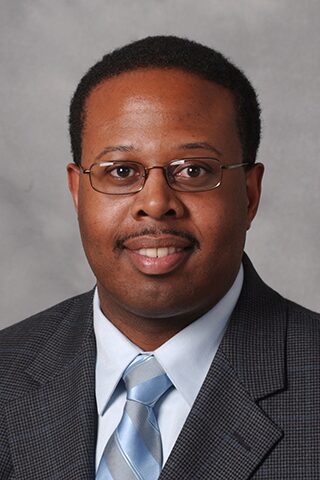 Dr. Thomas Kurfess, Professor and HUSCO/Ramirez Distinguished Chair in Fluid Power and Motion Control in the Woodruff School of Mechanical Engineering at Georgia Tech, has been named 2018 President of the Society of Manufacturing Engineering (SME), effective January 1, 2018. An active SME member since 1983, Dr. Kurfess was sworn in – along with the incoming 2018 SME Executive Committee and Board of Directors – at the Society’s Awards & Installation Banquet held last November in Dearborn, Michigan.
Dr. Thomas Kurfess, Professor and HUSCO/Ramirez Distinguished Chair in Fluid Power and Motion Control in the Woodruff School of Mechanical Engineering at Georgia Tech, has been named 2018 President of the Society of Manufacturing Engineering (SME), effective January 1, 2018. An active SME member since 1983, Dr. Kurfess was sworn in – along with the incoming 2018 SME Executive Committee and Board of Directors – at the Society’s Awards & Installation Banquet held last November in Dearborn, Michigan.
“It is a great honor for me to participate in the leadership team of the SME. The Society of Manufacturing Engineers is taking the lead in developing an inspired, educated, and prosperous manufacturing community, and with the Georgia Institute of Technology being the number one rated university in the manufacturing field in the United States, it is a perfect match with our mission, passion and capabilities.”
SME has been dedicated to supporting and educating the manufacturing industry for the last 85 years. Created as a membership organization in 1932, the nonprofit association has grown to serve the manufacturing industry through workforce development, training, events, media and membership.
In his new role, Dr. Kurfess will be responsible for leading the Board of Directors in setting the agenda, priorities and long range objectives of the Society. He will also serve as one of the key spokesmen regarding the SME community and the importance of manufacturing, and he will work with various Board members, officers, staff and members of SME to ensure a thriving and successful manufacturing community in the U.S. and around the world.
Dr. Kurfess’ address to SME appeared this month in Manufacturing Engineering Magazine. His address, “Yesterday’s Lessons and Tomorrow’s Opportunities,” details Kurfess’ own history in manufacturing and with SME, and offers insights into his role as President and the future of manufacturing. “My hope for 2018 and beyond is that we continue to advance manufacturing, enabling innovators to make the world a better place, not only providing wonderful products for humanity but also excellent jobs for our workforce,” writes Kurfess. “SME is particularly well suited to help society achieve this goal, and it is my full intention, with the support of SME membership, volunteers and staff, that we do so in 2018 and that we are prepared to do so for many generations to come.”
Dr. Kurfess holds SB, SM and PhD degrees in mechanical engineering and an SM degree in electrical engineering and computer science, all from MIT.
From 2012-13, Kurfess served as the assistant director for advanced manufacturing at the Office of Science and Technology Policy in the Executive Office of the President of the United States of America. He has also served as a special consultant of the United Nations to the Government of Malaysia in the area of applied mechatronics and manufacturing, and presently serves on the board of the National Center for Manufacturing Sciences, and the board of the National Center for Defense Manufacturing and Machining.
Throughout his career, Dr. Kurfess has received numerous awards, including the National Science Foundation Young Investigator Award, the NSF Presidential Faculty Fellowship Award, the AMT Charles F. Carter Jr. Advancing Manufacturing Award, the 2006 SME Philip R. Marsilius Outstanding Young Manufacturing Engineer Award and the 2010 SME Education Award. Dr. Kurfess was elected to the 2006 Class of SME Fellows, served as the 2007-08 NAMRI/SME president and was a member of the former Manufacturing Enterprise Council.



 Drone technology is quickly evolving –no longer just for military use, these flying robots now have a place within commercial enterprise. Also known as unmanned aerial vehicles, drones today have practical applications, like delivering packages for Amazon or allowing realtors to take aerial video to show off a sale property. To date, there is usually a weight limit on how much a drone can carry, restricting its usefulness. But Jonathan Rogers, assistant professor at the George W. Woodruff School of Mechanical Engineering, is trying to change that. He is designing, building and programming robotic drones that can link up and carry larger, heavier objects as a unit.
Drone technology is quickly evolving –no longer just for military use, these flying robots now have a place within commercial enterprise. Also known as unmanned aerial vehicles, drones today have practical applications, like delivering packages for Amazon or allowing realtors to take aerial video to show off a sale property. To date, there is usually a weight limit on how much a drone can carry, restricting its usefulness. But Jonathan Rogers, assistant professor at the George W. Woodruff School of Mechanical Engineering, is trying to change that. He is designing, building and programming robotic drones that can link up and carry larger, heavier objects as a unit.
 Nuclear and Radiological Engineering Professor Dr. Bojan Petrovic was elected International Member of the Croatian Academy of Engineering (HATZ).
Nuclear and Radiological Engineering Professor Dr. Bojan Petrovic was elected International Member of the Croatian Academy of Engineering (HATZ). 


 Woodruff School Professor Itzhak Green visited the Department of Materials Engineering, DIMAT, at the University of Concepción, Chile, in January.
Woodruff School Professor Itzhak Green visited the Department of Materials Engineering, DIMAT, at the University of Concepción, Chile, in January.  Jeremy Leff taught himself how to play the guitar about five years ago. Like many guitarists he uses pedals, electronic or digital devices that let musicians alter how their instrument sounds.
Jeremy Leff taught himself how to play the guitar about five years ago. Like many guitarists he uses pedals, electronic or digital devices that let musicians alter how their instrument sounds.
 This week’s spotlight sponsor is LapDog Securities, a small start-up that was founded about a year and half ago. The company focuses on designing a small, carefree device that sits on a laptop to effectively and subtly prevent theft. The company has started working with a team of mechanical engineering seniors of Georgia Tech to design a creative solution.
This week’s spotlight sponsor is LapDog Securities, a small start-up that was founded about a year and half ago. The company focuses on designing a small, carefree device that sits on a laptop to effectively and subtly prevent theft. The company has started working with a team of mechanical engineering seniors of Georgia Tech to design a creative solution.  The end of March sees the retirement of Dr. William J. Wepfer on completion of two five-year terms as the Eugene C. Gwaltney, Jr. Chair of the Woodruff School of Mechanical Engineering.
The end of March sees the retirement of Dr. William J. Wepfer on completion of two five-year terms as the Eugene C. Gwaltney, Jr. Chair of the Woodruff School of Mechanical Engineering. 



 The U.S. Environmental Protection Agency (EPA) awarded Georgia Technology Research Corporation, $14,995 and Kennesaw State University, $14,977 through the People, Prosperity, and Planet (P3) grants program. Nationally, over $463,000 in funding for 31 Phase I student teams was awarded through this program. These teams, made up of college students from across the country, are developing sustainable technologies to solve current environmental and public health challenges.
The U.S. Environmental Protection Agency (EPA) awarded Georgia Technology Research Corporation, $14,995 and Kennesaw State University, $14,977 through the People, Prosperity, and Planet (P3) grants program. Nationally, over $463,000 in funding for 31 Phase I student teams was awarded through this program. These teams, made up of college students from across the country, are developing sustainable technologies to solve current environmental and public health challenges. Proposed Solution: Team ‘Wizards of Woodruff Place’ is building a broomstick for users to ride while wearing a VR headset. The team is mainly focusing on the mechanical aspect of the broomstick flight simulator. The team has started building the broomstick out of aluminum and wood, utilizing tools available in the Invention Studio. Unlike the in the movies, the team has attached a seat to the broomstick for users to sit comfortably. Even though their focus is mechanical, the team has had help from the Digital Integrative Liberal Arts Center (DILAC) lab to create a virtual environment to test their broomstick flight simulator. FanaticusXR’s founder, Ernesto Escobar says that the student team has been extremely resourceful. “Students on the team have leveraged their skills from non-ME minors to bring a creative perspective to the project. This capstone team is helping me get the startup off the ground. Thus, the impact is huge”.
Proposed Solution: Team ‘Wizards of Woodruff Place’ is building a broomstick for users to ride while wearing a VR headset. The team is mainly focusing on the mechanical aspect of the broomstick flight simulator. The team has started building the broomstick out of aluminum and wood, utilizing tools available in the Invention Studio. Unlike the in the movies, the team has attached a seat to the broomstick for users to sit comfortably. Even though their focus is mechanical, the team has had help from the Digital Integrative Liberal Arts Center (DILAC) lab to create a virtual environment to test their broomstick flight simulator. FanaticusXR’s founder, Ernesto Escobar says that the student team has been extremely resourceful. “Students on the team have leveraged their skills from non-ME minors to bring a creative perspective to the project. This capstone team is helping me get the startup off the ground. Thus, the impact is huge”. Woodruff School Professor Surya Kalidindi has been named a recipient of the 2018 Department of Defense Vannevar Bush Faculty Fellowship. The Department of Defense selected 11 distinguished faculty scientists and engineers to join a cadre of 45 current Vannevar Bush Faculty Fellows, who are sponsored by the DoD to conduct foundational research in core science and engineering disciplines that underpin future DoD capabilities. Kalidindi is the first Georgia Tech faculty member to receive the fellowship.
Woodruff School Professor Surya Kalidindi has been named a recipient of the 2018 Department of Defense Vannevar Bush Faculty Fellowship. The Department of Defense selected 11 distinguished faculty scientists and engineers to join a cadre of 45 current Vannevar Bush Faculty Fellows, who are sponsored by the DoD to conduct foundational research in core science and engineering disciplines that underpin future DoD capabilities. Kalidindi is the first Georgia Tech faculty member to receive the fellowship. Woodruff School Associate Professor Satish Kumar and ME graduate student Jilauo Chen have developed a method to capture the performance variability in current voltage characteristics of thin-film-transistors, a process that will be helpful for reliability analysis and testing of carbon nanotube (CNT)-thin-film-transistors (TFTs) based devices. This technique can be applied to improve low-cost gas sensors for monitoring pollution and controlling industrial emissions.
Woodruff School Associate Professor Satish Kumar and ME graduate student Jilauo Chen have developed a method to capture the performance variability in current voltage characteristics of thin-film-transistors, a process that will be helpful for reliability analysis and testing of carbon nanotube (CNT)-thin-film-transistors (TFTs) based devices. This technique can be applied to improve low-cost gas sensors for monitoring pollution and controlling industrial emissions. Dr. Samuel Graham Jr. has been appointed as the new Eugene C. Gwaltney Jr. School Chair, George W. Woodruff School of Mechanical Engineering (ME), in the College of Engineering at the Georgia Institute of Technology, effective July 1, 2018. Graham is currently the Rae S. and Frank H. Neely Professor in the Woodruff School and the associate chair for research.
Dr. Samuel Graham Jr. has been appointed as the new Eugene C. Gwaltney Jr. School Chair, George W. Woodruff School of Mechanical Engineering (ME), in the College of Engineering at the Georgia Institute of Technology, effective July 1, 2018. Graham is currently the Rae S. and Frank H. Neely Professor in the Woodruff School and the associate chair for research.